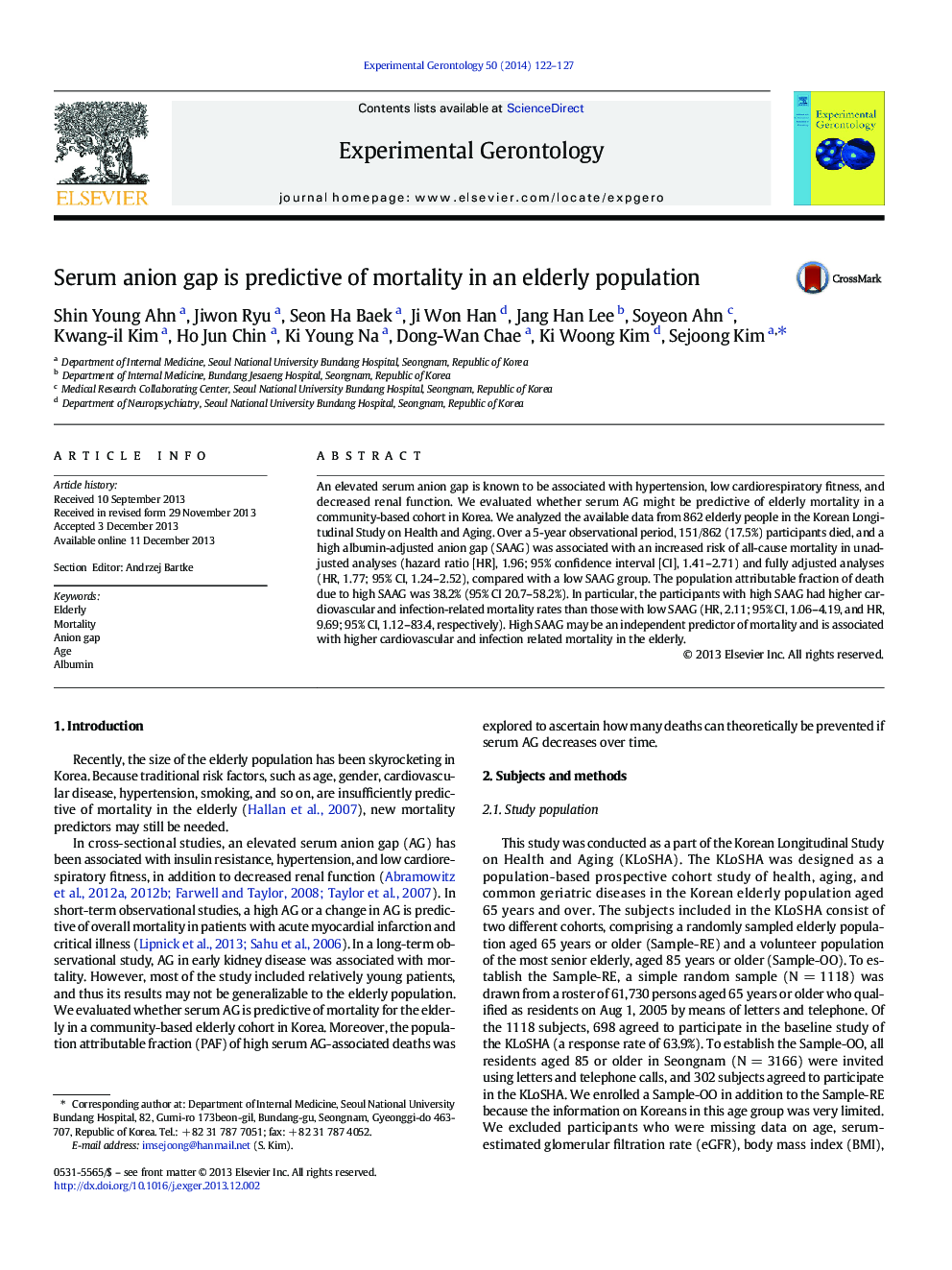| Article ID | Journal | Published Year | Pages | File Type |
|---|---|---|---|---|
| 8264675 | Experimental Gerontology | 2014 | 6 Pages |
Abstract
An elevated serum anion gap is known to be associated with hypertension, low cardiorespiratory fitness, and decreased renal function. We evaluated whether serum AG might be predictive of elderly mortality in a community-based cohort in Korea. We analyzed the available data from 862 elderly people in the Korean Longitudinal Study on Health and Aging. Over a 5-year observational period, 151/862 (17.5%) participants died, and a high albumin-adjusted anion gap (SAAG) was associated with an increased risk of all-cause mortality in unadjusted analyses (hazard ratio [HR], 1.96; 95% confidence interval [CI], 1.41-2.71) and fully adjusted analyses (HR, 1.77; 95% CI, 1.24-2.52), compared with a low SAAG group. The population attributable fraction of death due to high SAAG was 38.2% (95% CI 20.7-58.2%). In particular, the participants with high SAAG had higher cardiovascular and infection-related mortality rates than those with low SAAG (HR, 2.11; 95% CI, 1.06-4.19, and HR, 9.69; 95% CI, 1.12-83.4, respectively). High SAAG may be an independent predictor of mortality and is associated with higher cardiovascular and infection related mortality in the elderly.
Related Topics
Life Sciences
Biochemistry, Genetics and Molecular Biology
Ageing
Authors
Shin Young Ahn, Jiwon Ryu, Seon Ha Baek, Ji Won Han, Jang Han Lee, Soyeon Ahn, Kwang-il Kim, Ho Jun Chin, Ki Young Na, Dong-Wan Chae, Ki Woong Kim, Sejoong Kim,
